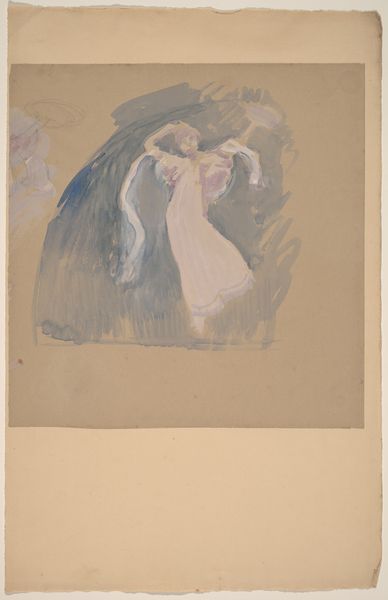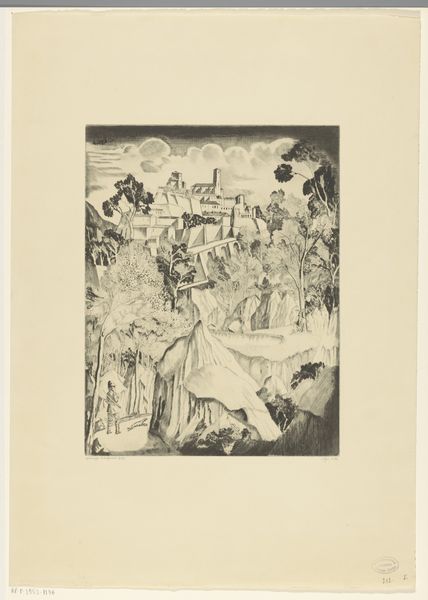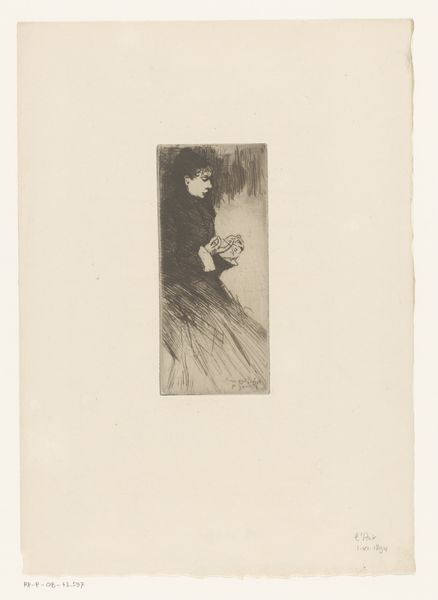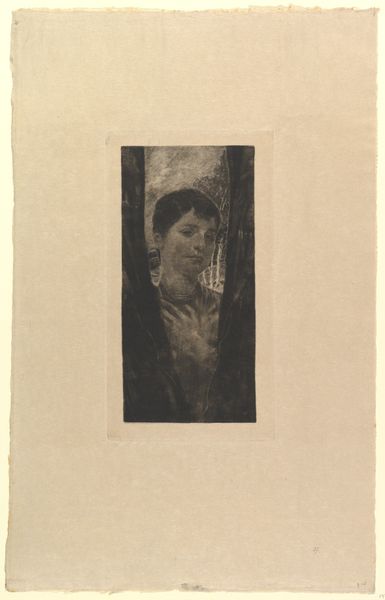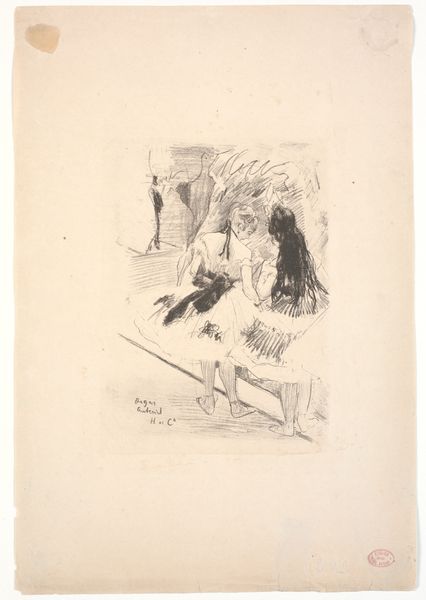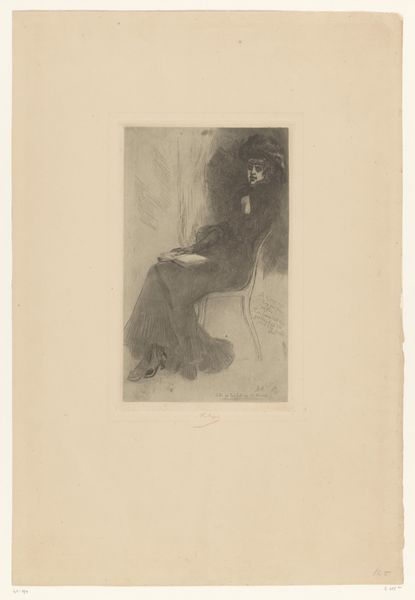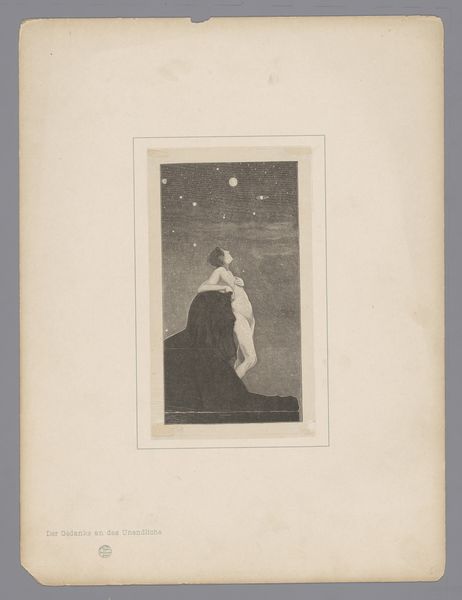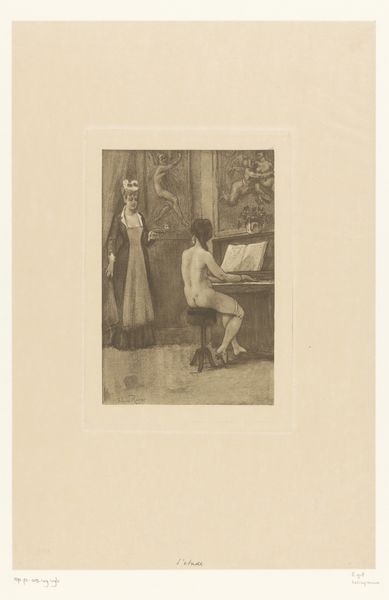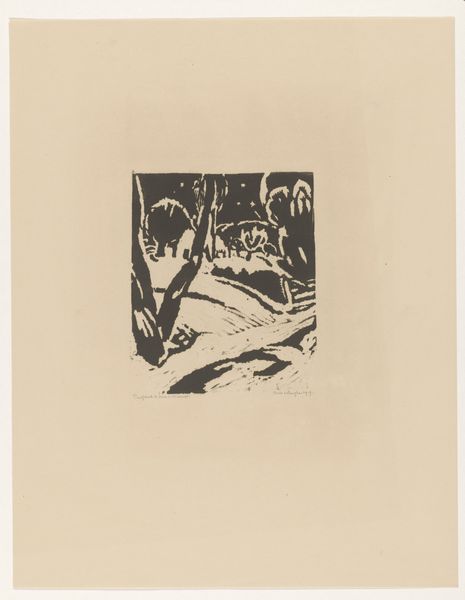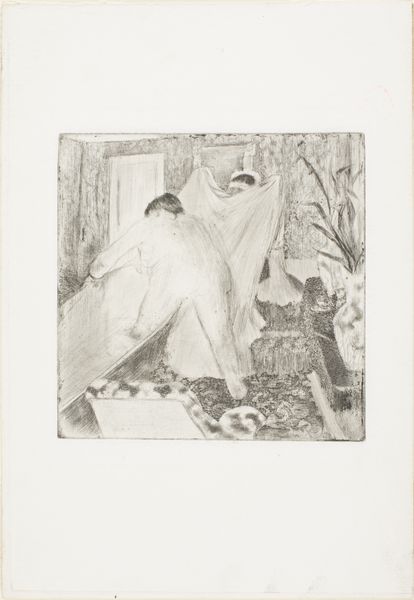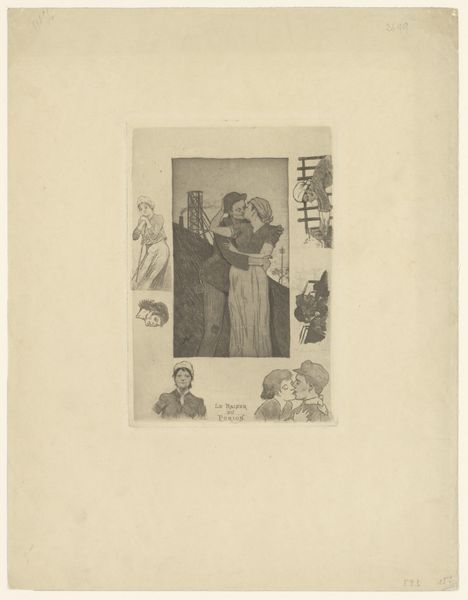
drawing, watercolor
#
drawing
#
landscape
#
figuration
#
watercolor
#
symbolism
#
academic-art
Dimensions: sheet: 19.1 × 12.7 cm (7 1/2 × 5 in.) mount: 46.2 × 30.2 cm (18 3/16 × 11 7/8 in.)
Copyright: National Gallery of Art: CC0 1.0
Editor: This is Charles Sprague Pearce's "Study for a Panel," created between 1890 and 1897 using watercolor and drawing techniques. I’m immediately drawn to the figure in white; she seems to be floating or ascending. It feels quite dreamlike. What symbols jump out at you in this piece? Curator: The upward gaze and outstretched arms of the floating figure are indeed potent symbols. It echoes classical depictions of ascent, often seen in religious iconography to indicate spiritual transcendence or perhaps even a soul's liberation from earthly constraints. Consider the landscape behind her - are we seeing paradise or a reflection of the psychological state of the figures below? Editor: The figures in the lower left are much more grounded and earth-toned. Does their placement signify something about the relationship between the earthly and spiritual realms? Curator: Precisely! Their positioning could suggest a yearning for the spiritual. Note how the figures huddle together; they lack the individual clarity of the ascending figure. It is possible this placement hints at a collective, perhaps even unconscious, desire for something beyond the material world. The composition itself mirrors that longing. Do you think it's successful? Editor: I do. I hadn't initially considered it as yearning, but now I see it. Is there a reason Pearce framed this scene within a frame? Curator: The frame is interesting, isn’t it? It reminds us that this is a construction, a mediated view. It could signify memory, a recollection framed within the artist's consciousness. What emotional response does the framing evoke in you? Editor: That makes perfect sense. It feels like looking at a memory, distant yet poignant. I now feel more connected to it emotionally. Curator: The power of symbolism! It reveals how images embed cultural memory and influence our understanding, both consciously and subconsciously. It is through deciphering these symbols that we truly connect with the art and its historical context.
Comments
No comments
Be the first to comment and join the conversation on the ultimate creative platform.
